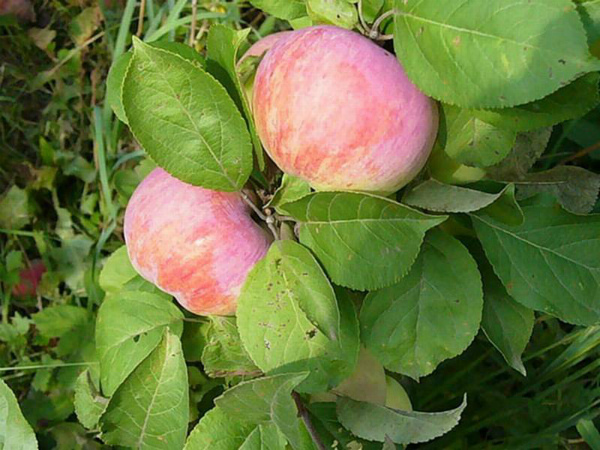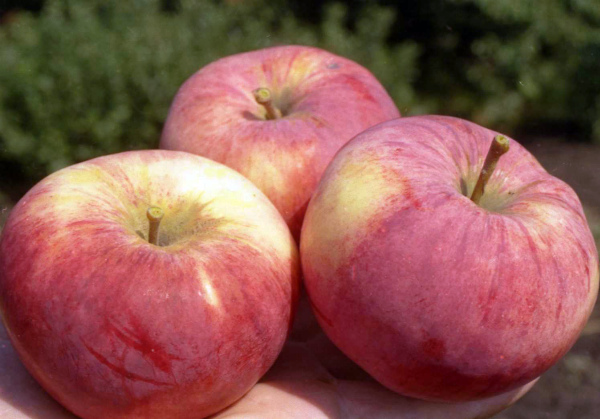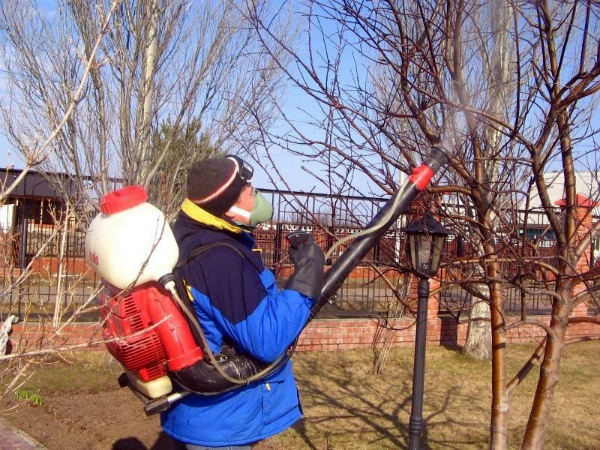Undemanding apple variety Orlovim
Content
Description and characteristics
“Orlovim” is one of the late summer varieties, which was bred in the All-Russian Research Institute, crossing “Antonovka ordinary” with a summer ripening seedling SR0523. The scientists Serova, Sedov and Zhdanov were engaged in the breeding and creation of a new variety.
A distinctive feature of "Orlovim" is the incredibly high resistance to scab, which is provided by the Vm gene.
The Orlovim apple tree grows in a medium layer, up to 5 meters in height, with a medium thickened crown, which is sometimes round, and sometimes broom-shaped. Skeletal branches are located rarely, at right angles to the trunk, often curved. The trunk and branches are covered with light brown bark with pronounced peeling. Shoots are formed thin, rich brown, covered with sparse small lenticels. The leaves of a tree of this variety are not very large, wrinkled, light green in color with a yellow tint. There are almost no veins. At the edges, the foliage is wavy, small-town. The tree blooms with large pale pink buds, shaped like saucers, with boat-shaped petals.
The apple tree bears fruit of medium size with apples weighing up to 170 grams. Fruits are one-dimensional, flat conical in shape with little pronounced ribbing. The skin is smooth and glossy to the touch. The main color of apples is green, but when ripe it turns light yellow. The cover color takes up almost the entire area of the apple, manifesting itself with a blurred red blush or deep red stripes. Seed chambers inside the apple are half-open. The pulp is creamy, firm, incredibly juicy, sweet and sour taste with a strong strong aroma.
The chemical composition of apples also deserves a separate description. For 100 grams of pulp, there are:
- 10% sugar;
- 10 mg ascorbic acid;
- 0.8% titrated acids;
- 14% pectin;
- 186 mg of P-active substances.
Orlovim apples ripen at the end of August. At the same time, during harvesting, care should be taken - if the fruits fall, they can split and from this their shelf life decreases.
It will not be possible to preserve the fruits for a long time, they retain their commercial qualities for only 4 weeks. That is why apples are often used to make compotes, jams, preserves or marmalades.
The trees enter the fruiting phase already at 3 years of growth in the garden. At the same time, the amount of the harvest increases every year. So, an 8-10-year-old tree gives up to 80 kilograms of fruit, a 15-18-year-old tree - up to 100 kilograms from one tree. In addition, the description cannot be complete without mentioning the high resistance of the apple tree to low temperatures, since it can survive the mark of -35 ° C. It also has good scab resistance.
Breeding history
As already noted, the variety was bred at the All-Russian Institute of Breeding back in 1977 after crossing "Antonovka Obytochnaya" with the seedling SR0523. Initially, the variety was developed and zoned for central Russia, but over time, the regions suitable for cultivation expanded to the Central regions.Given the high winter hardiness of the variety, it can also be grown in regions with short, critically low temperatures.
Growth geography
Taking into account the resistance to scab and other fungal diseases, as well as good winter hardiness, "Orlovim" is suitable for growing in the Central lane and Central regions of Russia, as well as practically throughout the territory of Belarus. That is, as the description says, an area with a moderately cold climate and rare drops in air temperature, down to -40-45 ° C, is ideal for growing apple trees of this variety.
Planting and leaving
Planting the variety is not much different from planting other varieties of apple trees. You will need an area that is well lit by the sun and does not have groundwater close to the surface. These two requirements can be considered key, since the final sweetness of the fruit depends on the amount of light, and the health of the tree depends on the stagnation of moisture.
For planting, an air-permeable soil is suitable, which passes water well, that is, all variations of loamy, loamy and floodplain soil with neutral acidity. You will need a hole about 90-110 centimeters deep and the same width as the roots of the seedling. Fill it with a mixture of soil, humus, superphosphate, potassium and ammonium nitrate, sprinkle with ordinary soil. Spread out the roots and place the seedling in the hole so that the root collar is 5 centimeters above ground level. Thoroughly cover and compact the soil around the roots of the seedling, then water it liberally.
Orlovim also does not require specific care. Of course, in the early years, careful and regular watering, weeding and mulching of the trunk circle is necessary. It is not necessary to loosen the soil after watering and rains, but it is highly desirable - this way you provide oxygen access to the roots, which has a positive effect on the growth of the tree.
For the winter, even though they are hardy, young trees should be insulated to help them cope with growth.
In the spring, it is necessary to carry out preventive pruning of old, dried, frozen branches, as well as remove old bark. It is recommended to whitewash the trunks with garden lime, as well as treat the trees with fungicidal and insecticidal preparations of complex action.
Diseases and pests
As a prophylaxis of fungal diseases, the Orlovim apple tree should be sprayed with special preparations: Zircon, Topaz - against fungal diseases, preparations based on karbofos - against insects. This is done several times a year.
The first treatments fall on the period before bud break, while using chemicals or a solution of copper sulfate mixed with urea. The second spraying must be carried out before flowering with the same composition.
The next spraying (with Bordeaux liquid or karbofos solution) is carried out during flowering in order to destroy the clutches of insects (for example, aphids or apple moths). Repeat spraying with Bordeaux liquid after 25 days.
The last spraying (with anabasine solution) is carried out shortly before harvest in order to level the remnants of insect colonies, as well as to protect the tree from fungal spores.
Video "Harvest of different varieties of apples"
Watch a video about different varieties of late summer apples.





